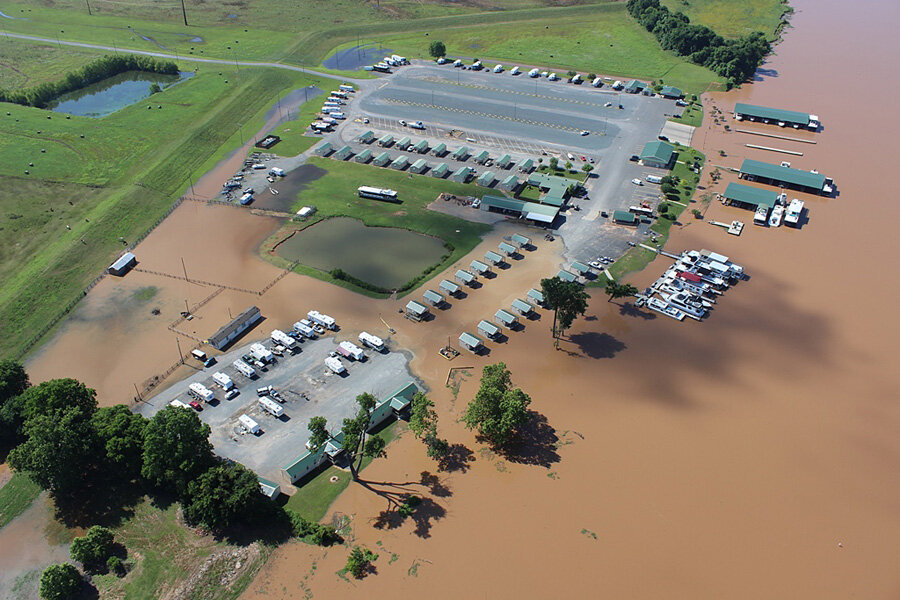Sewage spotted in Texas, Oklahoma. flooding: What do crews focus on next?
Loading...
Residents hit hard by the torrential rain and heavy flooding in parts of Texas, Oklahoma, and Louisiana in recent weeks now have to deal with another issue: sewage on the streets.
The flooding has swept away houses and cars and killed at least 18 people in Texas and Oklahoma, National Geographic reported.
And in some cities, it has also caused water treatment facilities to overflow, mixing raw sewage, toxic waste, and crude oil into flood waters.
One plant that was damaged in Houston has already released more than 100,000 gallons of untreated sewage into the water, according to National Geographic.
And in Oklahoma City, sewage both partially treated and raw have been spotted, as well as crude oil tanks floating in the water, Skylar McElhaney, a spokeswoman for the Oklahoma Department of Environmental Quality, told the magazine.
Treatment of storm water varies in different jurisdictions, according to authorities. Instead of reducing contamination, for instance, Houston and Oklahoma place priority on flood control, leaving water in both places untreated before draining into their rivers and streams.
The Centers for Disease Control has advised flood victims to wear rubber boots, gloves, and goggles, and thoroughly disinfect affected areas in their homes with soap and hot water.
State officials may be right to be focusing on curbing the water damage. “A lot of material gets washed away and there is no cleanup," McElhaney told National Geographic.
May was the wettest month on record for both Texas and Oklahoma, according to the Weather Channel. Currently, preliminary estimates put the damage from the Memorial Day weekend storm at more than $80 million, the Austin American-Statesman reported. Road repair and cleanup alone will cost about $15.6 million.
In Oklahoma, more than 130 dams flooded, 21 of which incurred damage, the Bartlesville Examiner-Enterprise reported. “Preliminary inspections indicate the cost of repairs may run in the millions of dollars,” Oklahoma Conservation Commission Conservation Programs Division Director Tammy Sawatzky told the newspaper.
Though flood waters have been receding, the tally for damages may continue to rise as Tropical Storm Bill inches closer.
Tuesday and Wednesday are expected to bring the heaviest onset of rain, the National Weather Service is warning. Up to 10 inches of rain are expected this week, according to USA Today.
Areas with the highest flood risk are Houston, Dallas, Oklahoma City, and Shreveport, La.






